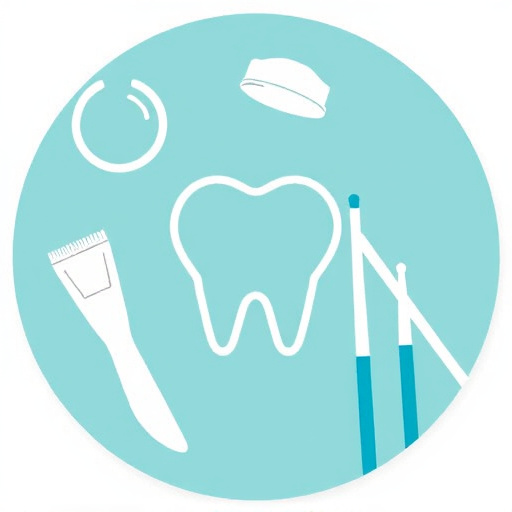Root canal treatment (RCT) has evolved from a painful to a modern, effective solution for saving natural teeth by removing infected pulp from the root canal, cleaning and sealing it. Advancements in techniques like anesthetic improvements, smaller instruments, and prompt restorative dentistry have made RCTs more comfortable. Proper aftercare, including pain management, good oral hygiene, and regular check-ups, is crucial for a smooth recovery. For children, gentle care and avoiding strenuous activities are essential.
“Experience minimal discomfort with modern root canal treatment. This comprehensive guide delves into the procedure, empowering you to make informed decisions about your dental health. We explore advanced techniques that minimize pain, ensuring a comfortable journey towards healing. From understanding the process to post-treatment care, learn how contemporary dentistry makes root canal therapy accessible and less intimidating. Discover tips for a smooth recovery and reclaim your smile with confidence.”
- Understanding Root Canal Treatment: A Comprehensive Overview
- Minimizing Discomfort: Modern Techniques and Patient Comfort
- Aftercare and Recovery: Nurturing Your Smile Post-Treatment
Understanding Root Canal Treatment: A Comprehensive Overview

Root Canal Treatment: Unwinding the Mystery
Root canal treatment is a common dental procedure that has earned a reputation for causing discomfort, but modern dentistry has revolutionized this perception. It involves removing the infected or damaged pulp from the tooth’s root canal, cleaning and shaping the space, and sealing it to prevent further infection. This process aims to save the natural tooth and avoid extraction. The procedure is often necessary when a tooth has decayed extensively, or there is damage due to trauma or cracks. By accessing the inner part of the tooth, known as the pulp chamber, dentists can address infections that may spread beyond the visible parts of the tooth.
This dental care technique is a comprehensive solution for those experiencing severe toothaches, swelling, or abscesses. It involves careful navigation through complex dental anatomy to ensure effective cleaning and sealing. With advanced tools and techniques, modern children’s dentistry has made root canal treatments more comfortable and efficient. Unlike the past, where it was often associated with significant pain, today’s root repair methods offer patients a more pleasant experience, allowing them to maintain their natural teeth for longer.
Minimizing Discomfort: Modern Techniques and Patient Comfort

In recent years, advancements in root canal treatment (RCT) techniques have significantly improved patient comfort during and after the procedure. Traditional RCTs were often associated with discomfort and fear due to their invasive nature. However, modern dental practices now employ innovative strategies to minimize pain and make the experience more manageable for patients.
One of the key aspects is utilizing advanced anesthetic techniques to numb the treatment area thoroughly. This ensures that patients feel little to no pain during the root canal procedure. Additionally, dentists use smaller instruments and precision techniques, reducing tissue damage and associated discomfort. Incorporating restorative dentistry methods post-RCT, such as dental fillings or crowns, further enhances patient comfort by restoring oral function and aesthetics promptly. Preventive dentistry plays a crucial role too; regular check-ups help identify potential issues early on, preventing more extensive treatments and associated discomfort in the long run.
Aftercare and Recovery: Nurturing Your Smile Post-Treatment

After a root canal treatment, proper aftercare is essential to ensure your smile recovers smoothly and maintains its health. It’s crucial to follow your dentist’s recommendations regarding post-treatment care, which may include taking prescribed medications for pain and swelling, as well as avoiding certain foods that could irritate the treated area. Staying hydrated and maintaining a soft diet can help alleviate discomfort and promote healing.
Additionally, good oral hygiene practices become even more vital during this period. Gently brushing your teeth and flossing regularly, while steering clear of the treated area, will prevent infection and aid in the restoration of your smile. Regular check-ups with your family dentistry practitioner are also important to monitor your recovery progress and address any concerns promptly. For children’s dentistry patients, parents should ensure their little ones receive gentle care and avoid strenuous activities that could dislodge the treated tooth or cause further complications, including necessary tooth extractions.
Root canal treatment has evolved to be a minimally invasive procedure, offering patients an effective solution for tooth pain with reduced discomfort. By utilizing modern techniques and focusing on patient comfort, healthcare providers ensure a smoother experience. Proper aftercare further facilitates a speedy recovery, allowing individuals to regain their smile and confidence without the usual apprehensions associated with dental treatments. Embracing these advancements in root canal treatment empowers patients to take charge of their oral health with greater ease and peace of mind.














